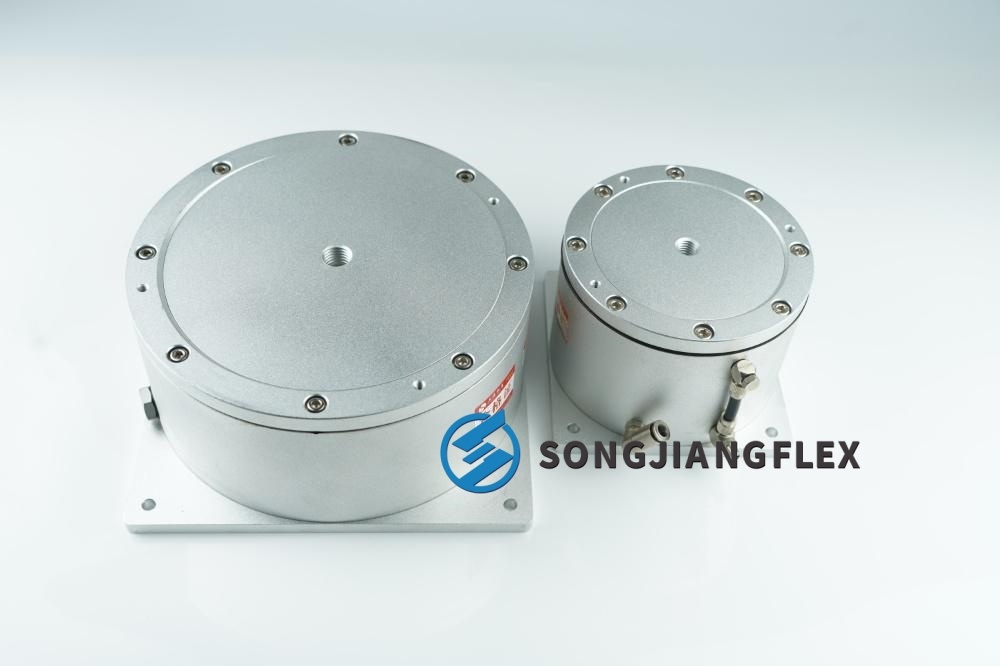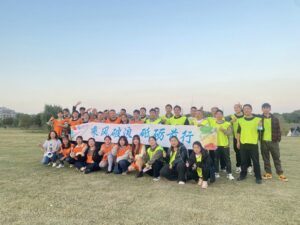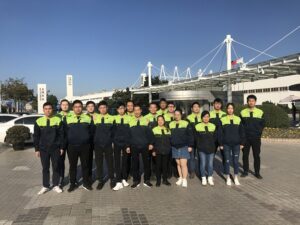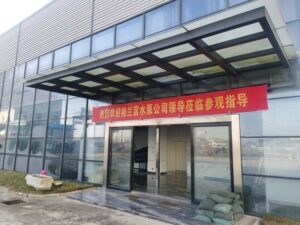Why Are Air Springs Called the “Cushion Shoes” for CNC Robots?
Vibration is one of the biggest challenges faced in CNC machining and robotic automation. Even minimal oscillations can cause inaccuracies, reduce surface quality, and lead to premature wear of high-value equipment. Operators often struggle to maintain precision under high-speed operations. Air springs provide a solution by acting as reliable vibration isolators, improving robotic stability and protecting sensitive components.
Air springs in CNC robots function as shock absorbers that reduce vibrations, maintain precision, and prolong equipment life. Acting like cushion shoes for CNC robots, they enhance machining accuracy, protect robotic arms, and outperform traditional mechanical dampers. These devices also contribute to energy efficiency and reduce maintenance needs.
Modern CNC systems demand uncompromising stability and accuracy. Air springs create a controlled, vibration-free environment that allows precise movements and repeatable results. They combine pneumatic flexibility with durable materials, providing an adaptive solution for diverse manufacturing scenarios, from high-speed milling to delicate mold production.
How do air springs reduce vibration in CNC robots?
CNC machines generate vibrations from rapid movements, cutting forces, and mechanical resonance, all of which can interfere with machining precision and increase wear on robot components. Air springs act as air spring vibration isolators, absorbing energy from these disturbances and reducing vibration transmission throughout the robot.
By cushioning the robotic arm and base, air springs minimize chatter, prevent misalignment, and stabilize multi-axis movements. This ensures consistent performance during long production runs, especially when high-frequency vibrations occur. Compared to rigid supports, air springs provide a more adaptable damping solution, which is crucial for high-speed and high-precision operations.
Why are air springs compared to “cushion shoes” in automation systems?
Air springs are often likened to cushion shoes for CNC robots because they offer flexible support that absorbs impact and reduces stress on the system. Just as cushioned footwear protects joints during human movement, air springs protect robotic components from shock and resonance.
This analogy illustrates how air springs enhance both durability and motion stability in automation systems. By acting as a flexible interface between the robot and its mounting platform, they reduce vibration energy transfer, prevent micro-misalignment, and allow smoother, more controlled robotic motion, which is especially important in repetitive tasks and sensitive machining applications.
What role do air springs play in improving CNC machining accuracy?
Even micro-vibrations can cause defects in precision machining. Air springs help maintain a stable operational environment, which is essential for precision machining vibration isolation. By absorbing vibrations before they reach the cutting tool or workpiece, they maintain dimensional accuracy and repeatability across all operations.
In applications such as aerospace component production, medical device machining, or high-precision mold making, tolerances are measured in microns. Air springs ensure consistent tool paths and prevent micro-chatter, reducing surface imperfections and rework rates. The result is higher-quality production and increased confidence in meeting strict specifications.
How do air springs extend the service life of CNC robotic arms?
Robotic arms undergo repeated stress during machining cycles, leading to fatigue and wear in joints, bearings, and motors. By integrating a robotic arm damping system, air springs reduce mechanical stress and vibration-induced fatigue, extending the usable lifespan of CNC robots.
With reduced vibration, connections remain tighter, gears experience less wear, and lubrication efficiency improves. Over time, this lowers maintenance frequency and costs, while ensuring reliable operation during demanding production cycles. Air springs also help maintain alignment, preventing premature failure of sensitive components and reducing downtime.
What is the difference between air springs and traditional mechanical dampers in CNC robots?
Mechanical dampers use rigid metal elements or friction to resist motion, which often limits their effectiveness at high frequencies. In contrast, air spring vs mechanical damper shows that air springs provide adaptive damping through pneumatic pressure, allowing for a wider frequency response and smoother energy absorption.
Air springs adjust dynamically to load changes, offering more precise vibration control without transmitting excessive force to the robotic arm. This adaptability ensures better CNC stability improvement and improved machining quality, especially under varying operational conditions. Mechanical dampers often require manual tuning or replacement, whereas air springs maintain consistent performance over time.
Can air springs improve stability during high-speed machining operations?
High-speed machining generates dynamic forces and resonance that can destabilize CNC robots. Air springs serve as air cushion vibration control devices, absorbing shocks and reducing oscillations that compromise stability.
During operations such as high-speed milling or rapid 3D printing, air springs maintain smooth motion by controlling deflection and vibration amplitude. This ensures consistent cutting paths, reduces tool wear, and preserves the quality of fine surfaces. Their dynamic response capability allows CNC robots to operate safely at higher speeds without sacrificing precision.
How do air springs protect sensitive CNC components from shock and resonance?
CNC systems include delicate sensors, controllers, and servo motors that are vulnerable to vibration. Pneumatic shock absorbers for CNC machines protect these components by isolating them from sudden shocks and resonance that could cause misalignment or failure.
Air springs prevent vibration-induced calibration drift, ensure reliable feedback from encoders and sensors, and maintain stable operation under dynamic loads. This protection is critical in high-precision applications where even minor disturbances can impact the overall production quality and machine lifespan.
Are air springs energy-efficient compared to other vibration isolation methods?
Air springs are more energy-efficient than active or hydraulic damping systems. Operating passively through pneumatic pressure, they require minimal external power while delivering consistent damping. Their efficiency reduces operational costs and contributes to sustainable manufacturing practices.
By integrating air suspension for industrial robots, factories can achieve effective vibration control with low energy consumption. Air springs also reduce wear on mechanical components, further lowering energy and maintenance costs over time, making them a cost-effective and eco-friendly solution for automated systems.
What types of CNC machines and robots commonly use air springs?
Air springs are versatile and used in CNC lathes, milling machines, grinders, and industrial robotic arms. They are also common in collaborative robots and automated material handling systems, where anti-vibration air mounts are essential for consistent operation.
Their adaptability makes them suitable for both heavy-duty production environments and delicate precision tasks. By reducing vibration across a variety of platforms, air springs enhance operational reliability, protect expensive tooling, and support high-precision robotic motion control.
How does the design of air springs enhance robotic flexibility and precision?
Air springs are designed with reinforced rubber bellows and controllable pneumatic pressure, enabling flexible support that adapts to varying loads. This allows CNC robots to maintain precise motion while absorbing vibration.
Their high-precision robotic motion control capabilities improve multi-axis movements, reduce backlash, and support complex machining patterns. The flexible design also allows faster response to dynamic forces, making them indispensable for modern automation systems that demand both accuracy and agility. Air springs are therefore a key component in achieving precision, durability, and operational efficiency.
Conclusion
Air springs act as the “cushion shoes” for CNC robots, providing superior vibration isolation, enhanced precision, longer equipment life, and energy-efficient operation. Integrating CNC robot air springs and air suspension for industrial robots ensures stability, productivity, and durability in high-demand manufacturing environments. For more technical details and product specifications, explore air springs to optimize your CNC robotic systems.






